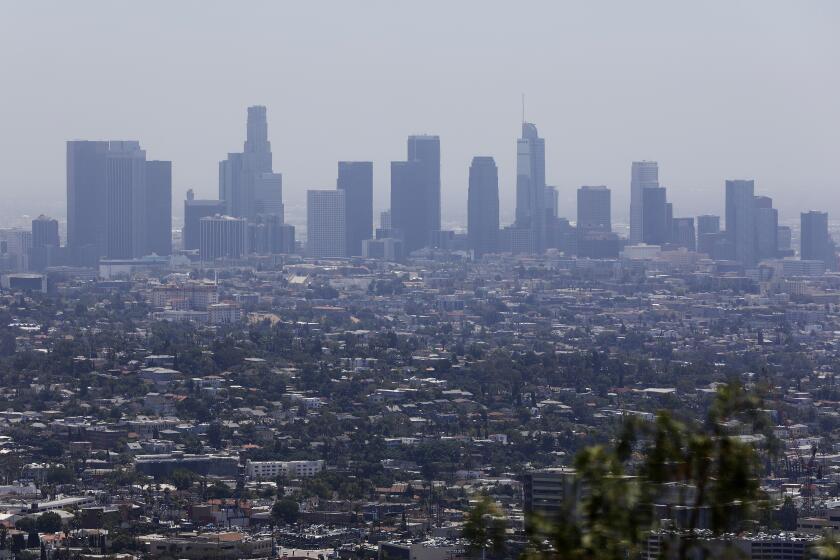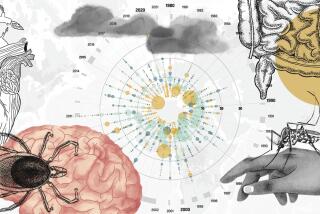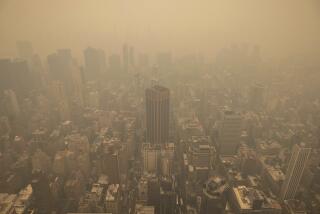With humans shut in by the coronavirus, nature sees an opportunity
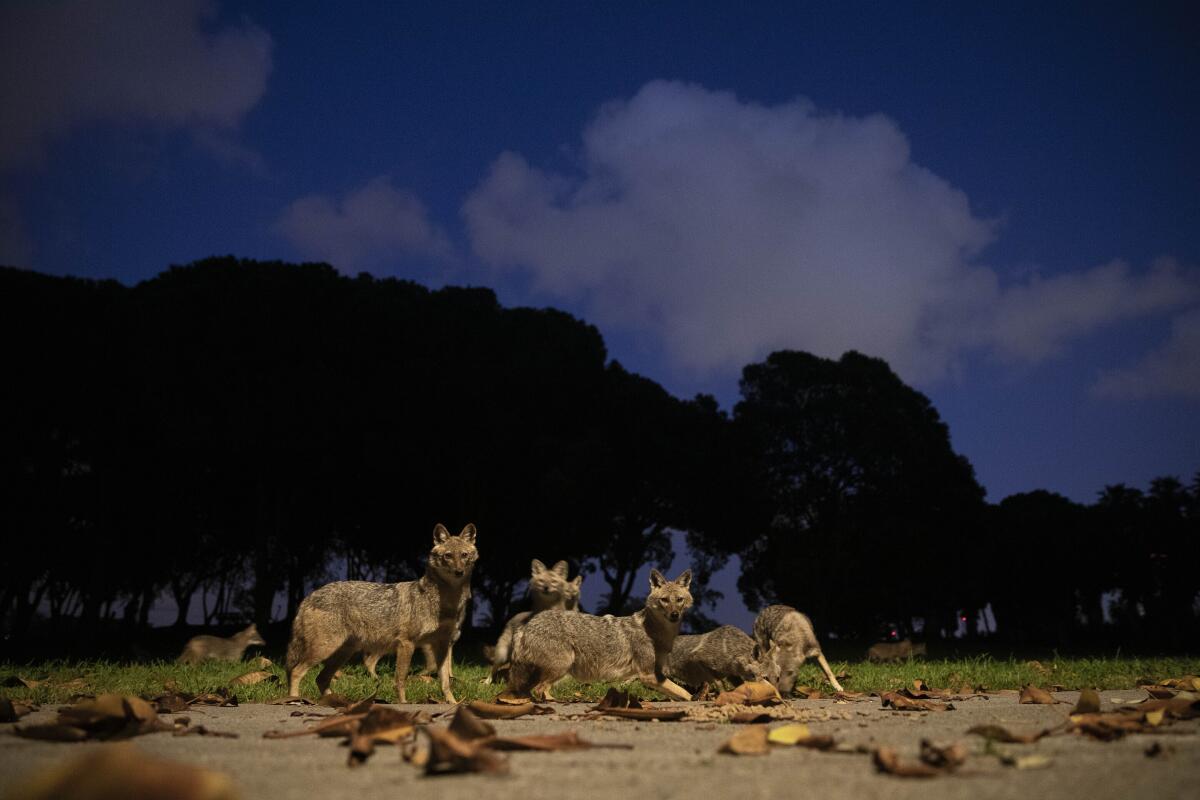
- Share via
As people across the globe stay home to stop the spread of the new coronavirus, the planet is becoming cleaner and more wild.
Smog stopped choking New Delhi, one of the most polluted cities in the world, allowing Indians to see distant mountains not visible in decades. Nitrogen dioxide pollution has declined 30% in the northeastern United States. And in Rome, air pollution levels have plunged 49% between mid-March and mid-April, making stars seem more visible at night.
Wild animals are being noticed in unusual places. Coyotes have been spotted meandering along downtown Chicago’s Michigan Avenue and near San Francisco’s Golden Gate Bridge. A puma roamed the streets of Santiago, Chile, while goats took over a town in Wales. In India, already daring wildlife has become bolder, with hungry monkeys entering homes and opening refrigerators to look for food.
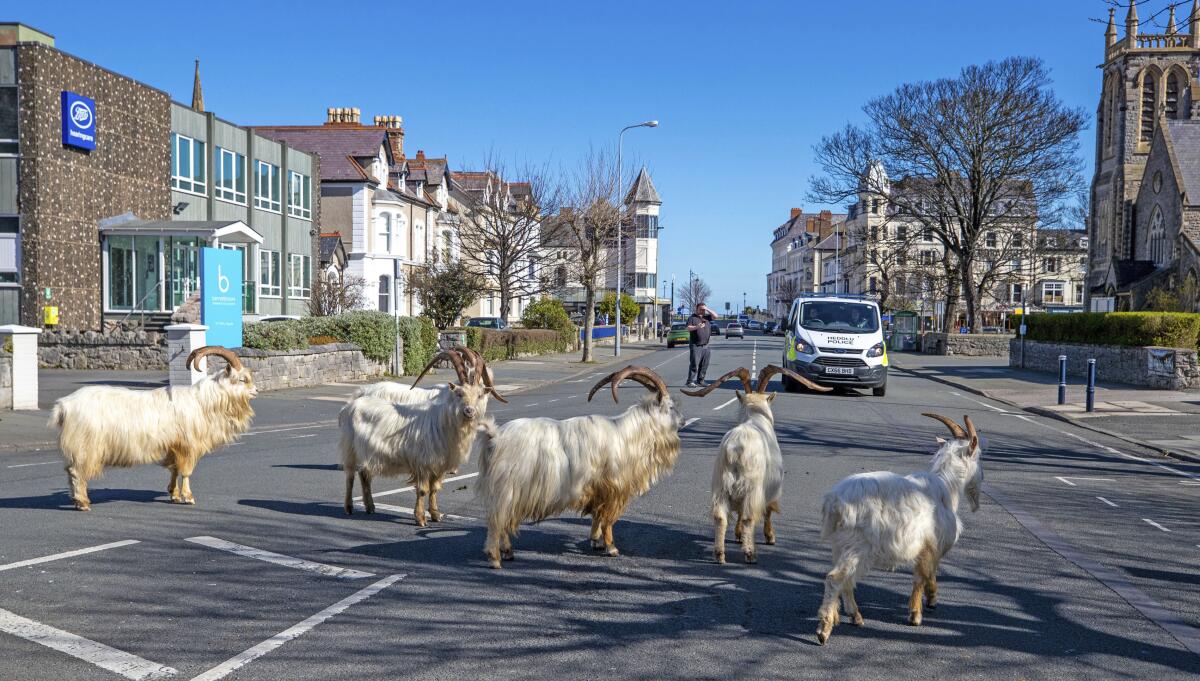
“It is giving us this quite extraordinary insight into just how much of a mess we humans are making of our beautiful planet,” said Stuart Pimm, a conservation scientist at Duke University. “This is giving us an opportunity to magically see how much better it can be.”
Chris Field, director of the Stanford Woods Institute for the Environment, assembled a group of researchers to assess the ecological changes happening while so much of humanity is housebound. Scientists, stuck at home like the rest of us, said they are eager to explore unexpected changes in weeds, insects, weather patterns, noise and light pollution.
“In many ways we kind of whacked the Earth system with a sledgehammer and now we see what Earth’s response is,” Field said.
Among other things, researchers are tracking dramatic drops in traditional air pollutants, such as nitrogen dioxide, smog and tiny particles. These types of pollution kill up to 7 million people a year worldwide, according to Dan Greenbaum, president of the Health Effects Institute.
The air from Boston to Washington is the cleanest it’s been since a NASA satellite started measuring nitrogen dioxide in 2005, said NASA atmospheric scientist Barry Lefer. The air gets clean quickly because this type of pollution, which is largely caused by burning of fossil fuels, is short-lived, he said.
Compared to the previous five years, March air pollution is down 46% in Paris, 38% in Sydney, 29% in Los Angeles, 26% in Rio de Janeiro and 9% in Durban, South Africa, NASA measurements show.
“We’re getting a glimpse of what might happen if we start switching to non-polluting cars,” Lefer said.
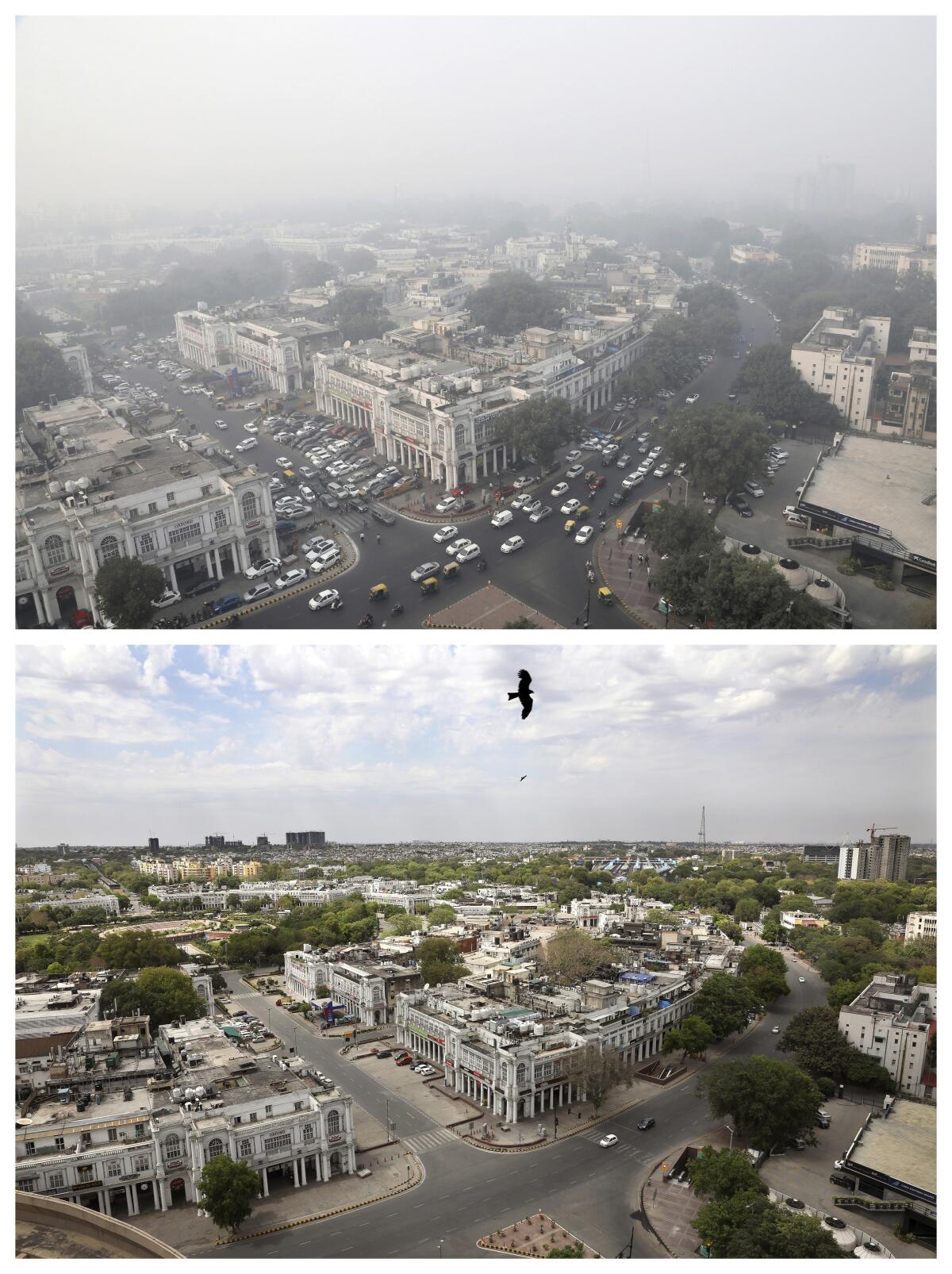
Cleaner air has been most noticeable in India and China. On April 3, residents of Jalandhar, a city in north India’s Punjab, woke up to a view not seen for decades: snow-capped Himalayan peaks more than 100 miles away.
Cleaner air means stronger lungs for people with asthma, especially children, said Dr. Mary Prunicki, director of air pollution and health research at the Stanford University School of Medicine. And she notes early studies also link coronavirus severity to people with bad lungs and those in more polluted areas, though it’s too early to tell which factor is stronger.
Health and environmental groups say the study is stark evidence of the danger of weakening pollution safeguards during the coronavirus pandemic.
The greenhouse gases that trap heat and cause climate change stay in the atmosphere for 100 years or more, so the pandemic shutdown is unlikely to affect global warming, said Breakthrough Institute climate scientist Zeke Hausfather. Carbon dioxide levels are still rising, but not as fast as last year.
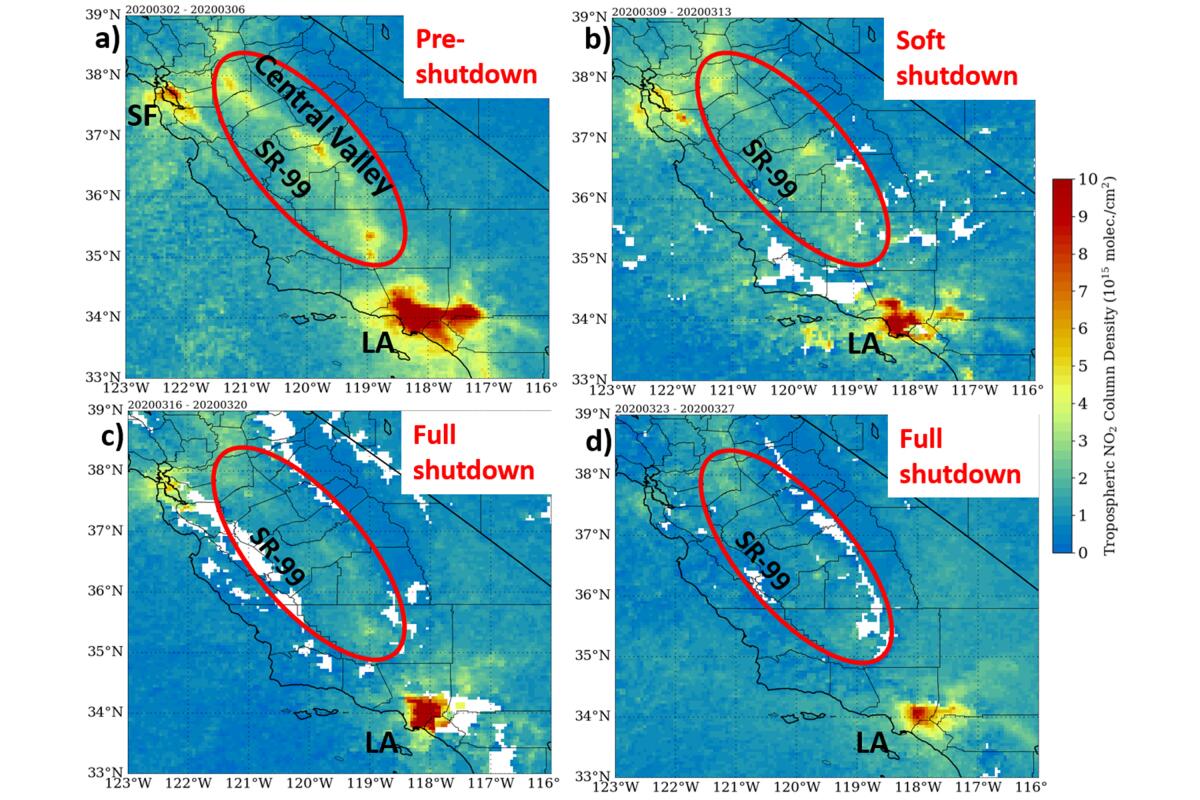
Aerosol pollution, which doesn’t stay airborne long, is also dropping. But aerosols cool the planet, so NASA climate scientist Gavin Schmidt is investigating whether their falling levels may be warming local temperatures for now.
Field says he’s most intrigued by increased urban sightings of coyotes, pumas and other wildlife that are becoming famous on social media. Boar-like javelinas congregated outside an Arizona shopping center. Even New York City birds seem hungrier and bolder.
Coronavirus: With residents at home, a menagerie of wildlife is reclaiming lost territory across Los Angeles and Orange counties.
In Adelaide, Australia, police shared a video of a kangaroo hopping around a mostly empty downtown, and a pack of jackals occupied an urban park in Tel Aviv.
We’re not being invaded. The wildlife has always been there, but many animals are shy, Pimm said. They come out when humans stay home.
For sea turtles across the globe, humans have made it difficult to nest on sandy beaches. The turtles need to be undisturbed, and emerging hatchlings get confused by beachfront lights, said David Godfrey, executive director of the Sea Turtle Conservancy.
But with lights and people away, this year’s sea turtle nesting so far seems much better from India to Costa Rica to Florida, Godfrey said.
“There’s some silver lining for wildlife in what otherwise is a fairly catastrophic time for humans,” he said.
